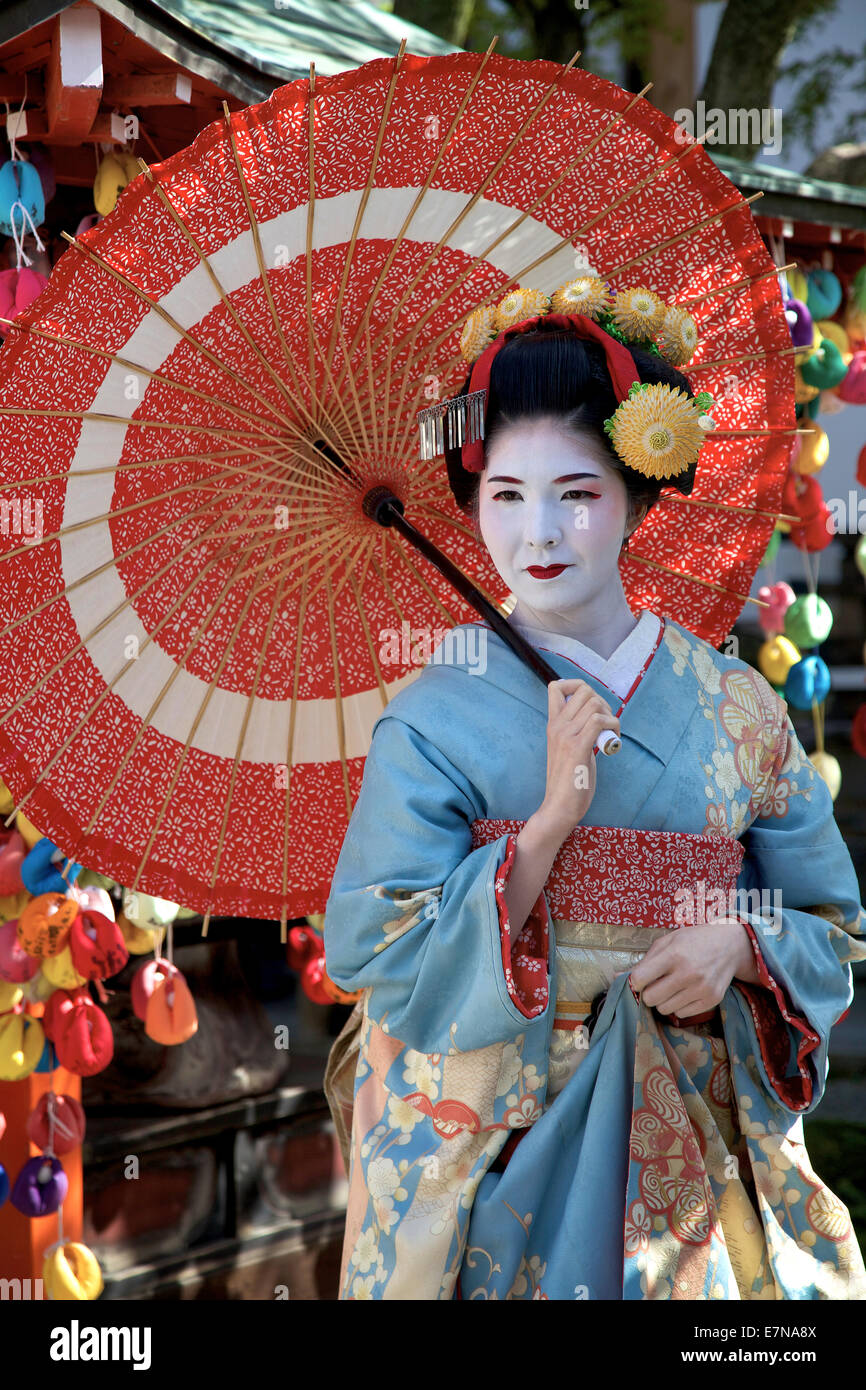In the misty alleys of Kyoto, where the soft glow of lanterns danced across the faces of passersby, the world of the geisha was a mystique that beckoned with an otherworldly allure. For centuries, these enigmatic entertainers have captivated the imagination of people around the globe with their exquisite grace, captivating beauty, and the profound depth of their traditional arts. Yet, behind the ornate masks and the meticulously crafted hairstyles, lies a complex tapestry of discipline, sacrifice, and dedication that few outsiders have ever truly comprehended.
To delve into the realm of the geisha is to embark on a journey through time, navigating the intricate nuances of Japanese tradition and the evolving role of these icons within their society. The term “geisha” itself, often misunderstood as merely synonymous with “courtesan,” actually refers to highly skilled performers trained in various traditional arts: music, dance, literature, and poetry, among others. Their role was not just that of entertainers but of preservers of cultural heritage, weaving a spell of elegance and refinement in the teahouses and private chambers where they plied their trade.
The origins of the geisha culture are shrouded in mystery, but it is widely acknowledged that they emerged during the Edo period (1603-1868), a time of relative peace and cultural flowering in Japan. The first geisha were actually men, known as “taikomochi,” who entertained wealthy clients with stories, music, and dance. Over time, female geisha, known as “geiko,” began to dominate the profession, particularly in the cities of Kyoto and Edo (now Tokyo). These women were not merely entertainers; they were also highly educated in the traditional arts, which they studied for years under the tutelage of experienced mentors.
The journey of a geisha begins early, typically in childhood, with a rigorous apprenticeship known as “minarai.” During this period, young girls learn not just the technical skills of music, dance, and poetry, but also the subtleties of etiquette, the art of conversation, and the nuances of traditional Japanese aesthetics. They live in “okiya,” geisha houses, under the guidance of an experienced geisha who acts as both mentor and mother figure. The training is grueling, with days filled from dawn till late at night with lessons, practice, and chores. The dedication required is absolute, and the dropout rate is high, yet for those who persevere, the rewards are immense.
One of the most fascinating aspects of geisha culture is the concept of “hana” and “mizu,” or “flower” and “water,” which symbolize the delicate balance between the fleeting nature of life (like a flower) and the constant, enduring aspect (like water). This duality reflects the essence of the geisha’s art and existence—a blend of the ephemeral moment and the timeless tradition. Every gesture, every note of music, every word of poetry is a testament to this creed, a celebration of life’s transient beauty and the lasting impact of tradition.
The role of the geisha has evolved over the centuries, adapting to changes in Japanese society while remaining deeply rooted in its traditions. From the early 20th century, the number of geisha began to decline, as Western influences and modernization brought about significant changes in Japanese culture and entertainment. However, in recent decades, there has been a resurgence of interest in traditional Japanese arts, leading to a renewed appreciation for the geisha and their unique cultural contribution. Today, while the world of the geisha remains mysterious and exclusive, there is a growing recognition of the importance of preserving this ancient tradition for future generations.
For those who delve into the memoirs of geisha, such as the famous “Memoirs of a Geisha” by Arthur Golden, which offers a glimpse, albeit fictional, into the secret world of these enigmatic figures, the reality is often more nuanced, more complex, and more deeply human than the stereotypes suggest. The life of a geisha is not just one of beauty and entertainment but also of hard work, sacrifice, and the pursuit of perfection in one’s craft. It is a testament to the enduring power of tradition and the unyielding human spirit that seeks expression and connection through art.
In conclusion, the world of the geisha offers a captivating window into the heart of Japanese tradition, a world where art, beauty, and discipline intertwine to create something truly unique and valuable. As we navigate the complexities of modern life, the geisha reminds us of the importance of preserving our cultural heritage, honoring our traditions, and cultivating the beauty and elegance that only dedicated practice and a deep connection to our roots can bring.
How Geisha Traditions Are Preserved
The preservation of geisha traditions is a multifaceted endeavor that involves the geisha community, cultural institutions, and the broader society. At its core, it is about ensuring that the traditional arts, customs, and values that define the geisha way of life are passed down to future generations. This involves not just the formal education and apprenticeship of young geisha but also the protection of traditional performances, the support of geisha houses, and the promotion of cultural events that celebrate geisha arts.
Moreover, the digital age has presented both opportunities and challenges for the preservation of geisha traditions. On one hand, digital platforms and social media can provide unprecedented access to information about geisha culture, helping to raise awareness and appreciation worldwide. On the other hand, the vivid and often misunderstood portrayals of geisha in popular media can lead to the perpetuation of stereotypes and the dilution of the traditional practices and values that underpin geisha culture.
Balancing Tradition and Modernity
In the contemporary world, the geisha must navigate a delicate balance between honoring their ancient traditions and embracing the realities of modern life. This involves adapting to changing societal values and economic conditions while maintaining the essence of their art and culture. For instance, many geisha today engage in public performances and events, sharing their traditional arts with a wider audience than ever before. This not only helps in preserving the traditions but also in making them more accessible and relevant to modern society.
However, this adaptation must be careful not to undermine the foundations of geisha culture. The geisha’s role as a guardian of traditional Japanese arts means that they must be cautious in their embrace of modernity, ensuring that innovation serves to enhance rather than replace the timeless values and practices that define their profession.
The Role of Community in Geisha Culture
Community plays a pivotal role in the world of the geisha, serving as both a support system and a source of identity. The relationships within the geisha community, particularly between mentors and apprentices, are built on trust, respect, and a shared dedication to their craft. The community also extends beyond the confines of the geisha houses and teahouses, encompassing patrons, other artists, and the broader cultural landscape of Japan.
Understanding the geisha’s place within this community requires an appreciation for the intricate social dynamics and hierarchies that govern their world. It involves recognizing the geisha not just as individual artists but as members of a collective that works together to preserve and promote traditional Japanese culture.
What the Future Holds for Geisha Culture
As the world continues to evolve at a rapid pace, the future of geisha culture is a topic of much discussion and speculation. While there are challenges to be faced, including declining numbers and the pressures of modernization, there are also opportunities for growth and renewal. The key to the geisha’s survival lies in their ability to adapt while remaining true to their traditions, embracing new technologies and audiences without sacrificing the essence of their art.
Moreover, the growing interest in traditional Japanese culture, both domestically and internationally, presents a unique chance for the geisha to reconnect with their roots and to share their unique cultural contributions with a broader audience. This could involve collaborations with other artists, participation in cultural festivals, and the development of educational programs aimed at preserving and promoting geisha traditions for future generations.
Preservation through Education
Education is crucial in the preservation of geisha traditions, serving as a bridge between the past and the future. It involves not just the formal training of geisha apprentices but also the broader dissemination of knowledge about geisha culture and history. This can be achieved through workshops, lectures, and cultural events that bring the geisha and their traditions to the forefront, providing audiences with a deeper understanding and appreciation of this unique aspect of Japanese heritage.
Furthermore, incorporating the study of geisha culture into educational curriculums can help ensure that future generations understand the significance of this tradition and are equipped to carry it forward. This would involve developing educational materials and programs that highlight the role of the geisha in Japanese society, their contributions to the arts, and the importance of preserving cultural heritage.
Digital Platforms and Geisha Culture
The advent of digital platforms has transformed the way geisha culture is experienced and appreciated. These platforms offer unprecedented opportunities for the geisha to reach new audiences, share their traditions, and build a global community of supporters. However, this digital presence must be carefully managed to ensure that it supports rather than diminishes the geisha’s traditional way of life.
This could involve creating digital content that showcases geisha performances, interviews with geisha, and educational resources about geisha culture. Social media can also be leveraged to promote events, engage with fans, and provide insights into the daily life and training of a geisha. By embracing digital technology in a thoughtful and strategic manner, the geisha can harness its power to preserve and promote their traditions in the modern era.
What is the primary role of a geisha in Japanese tradition?
+The primary role of a geisha is that of an entertainer and preserver of cultural heritage, skilled in traditional arts such as music, dance, literature, and poetry. They provide companionship and entertainment in teahouses and private gatherings, serving as guardians of Japanese cultural traditions.
How do geisha adapt to modern society while preserving their traditions?
+Geisha adapt to modern society by embracing digital platforms to share their culture, participating in public performances and events, and collaborating with other artists. They must balance their traditional practices with the realities of modern life, ensuring that innovation enhances rather than replaces their timeless values and practices.
What is the significance of the geisha's role in preserving Japanese cultural heritage?
+The geisha plays a crucial role in preserving Japanese cultural heritage by maintaining and passing down traditional arts, customs, and values. They serve as living bridges between the past and the present, ensuring that the essence of Japanese tradition is kept alive and vibrant for future generations.
How can one learn more about geisha culture and traditions?
+One can learn more about geisha culture through books, documentaries, and digital resources. Attending traditional Japanese cultural events, workshops, and lectures can also provide valuable insights. Furthermore, interacting with the geisha community, either directly or through digital platforms, can offer a firsthand understanding of their traditions and way of life.
What does the future hold for the geisha and their traditions?
+The future of the geisha is promising, with opportunities for growth, adaptation, and the sharing of their unique cultural contributions with a broader audience. By embracing modern technologies and engaging with new generations, the geisha can ensure the long-term preservation and appreciation of their traditions, securing their place in the cultural landscape of Japan and the world.
As we reflect on the geisha and their place in Japanese tradition, it becomes clear that their role extends far beyond that of entertainers. They are guardians of a rich cultural heritage, preservers of traditional arts, and living embodiments of the timeless values and aesthetics that underpin Japanese society. Their ability to balance tradition with modernity, while maintaining the essence of their craft, serves as a powerful testament to the enduring power of culture and tradition in our rapidly changing world.
Understanding and Appreciating Geisha Culture: A Step-by-Step Guide

- Education and Research: Begin by learning about the history, traditions, and cultural significance of the geisha. This foundation will provide a deeper appreciation and understanding of their role in Japanese society.
- Engage with Geisha Arts: Attend traditional performances, watch documentaries, and explore digital content that showcases geisha culture. This direct engagement will offer insights into their arts and traditions.
- Visit Traditional Settings: Visiting teahouses, attending cultural festivals, and participating in workshops can provide firsthand experiences of geisha culture and traditions.
- Support Preservation Efforts: Contributing to initiatives aimed at preserving geisha traditions, whether through donations, volunteering, or spreading awareness, can help ensure the long-term viability of these cultural practices.
- Respect and Appreciation: Approach geisha culture with respect and an open mind, recognizing the dedication, hard work, and cultural significance that underpin the geisha's way of life.
Modernization and Geisha Culture: Weighing the Pros and Cons

Pros
- Global Reach: Digital platforms can help geisha culture reach a global audience, promoting understanding and appreciation.
- Preservation: Modern technologies can aid in the preservation of traditional arts and customs.
- Innovation: Embracing modernity can lead to the evolution of geisha culture, making it relevant to new generations.
Cons
- Cultural Dilution: Over-adaptation to modern trends can lead to the dilution of traditional practices and values.
- Loss of Authenticity: The commercialization of geisha culture can result in the loss of its authenticity and cultural significance.
- Resistance to Change: The geisha community may face resistance from within regarding the adoption of modern practices, potentially hindering their ability to adapt and evolve.
The geisha, with their unique blend of traditional arts and modern adaptability, offer a captivating glimpse into the heart of Japanese culture. As we navigate the complexities of the modern world, their dedication to preserving cultural heritage while embracing change provides valuable lessons in the importance of tradition, innovation, and the human spirit.



